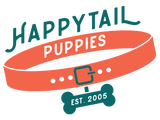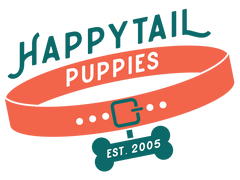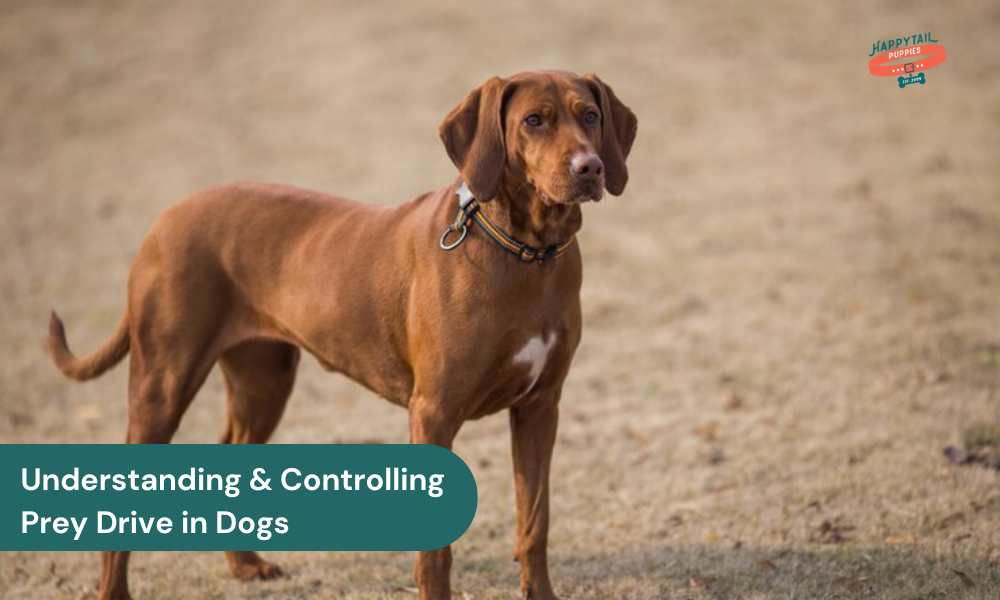Understanding & Controlling Prey Drive in Dogs
Prey drive in dogs can lead to chasing behaviors that may be difficult to control. Learn effective training techniques to manage instincts and ensure safety.
Being a pet owner, identifying your dog's instincts remains critical to offering them the appropriate training. One of the most intricate attributes of the dog's behavior is the management of their natural prey drive. It is an instinct that mainly exists in several breeds. Prey drive refers to the desire of your dog to chase and capture prey like moving objects, small animals, and more. For every dog owner, managing prey drive in dogs is important to ensure both comfort and safety for the pets and their families. Luckily, by following the right strategies and training tactics, you can instill positive behavior in your pup.
Understanding Prey Drive-in Dogs
Canine prey drive often refers to the instincts of dogs to chase and capture their prey. It forms the primal behavior shared by most of the canines, including breeds like Cocker Spaniel. Dogs with high prey drive often show signs of intense focus, energy, and excitement whenever they find anything moving, like a rabbit or squirrel. The instinct is deep-rooted in the survival tactics of their ancestral breeds, who depend on hunting for food. But, whenever this behavior is left unaddressed, it poses a notable threat for the pet owners.
Knowing the condition of the drive is the first step to managing it effectively. Breeds with a strong prey drive are often prone to a stronger instinct that influences the overall training type and activities needed to control this drive.
Recognizing Prey Drive in Dogs
Addressing the prey drive signs is the key to caring for your dog. The common signs include:
- Chasing movements: Dogs that immediately chase after moving objects like cars, people running, or bicycles are more likely to have a high prey drive. This behavior is common in certain breeds including Miniature Dachshunds driven by strong instincts for prey.
- Fixation on small animals: When your pup is constantly fixated or alert on birds, squirrels, or rabbits, as their prey drive is often highly pronounced.
- Intense focus: Dogs with a high prey drive might often show an intense focus on objects they aim to chase, often ignoring their owner's calls.
- Predatory behaviors: Few dogs might even engage in behaviors such as punching or stalking, often imitating the hunting tactics.
Recognizing such behaviors often helps you determine the appropriate measures to address and redirect your dog's prey drive.
How to Control Prey Drive in Dogs?
There are different activities for dogs with a high prey drive that involve knowledge, consistency, and patience. However, it is not possible to eradicate these instances. They can be controlled with the right techniques. So, here are a couple of effective strategies for controlling dogs' prey drives.
Basic Training: The First Step in Managing Prey Drive
Before addressing the distinctive tactics for managing dogs' prey drive, ensure that a strong foundation of obedience is laid. Addressing behavioral issues in small dogs can help manage their prey drive. Train your pups to respond to basic commands like "stay," "sit," and "leave it." Managing prey drive becomes challenging without these commands.
The command "leave it" becomes a lifesaver whenever your dog starts chasing or gets fixated on moving objects or animals. Practice in environments with fewer distractions and slowly increase distractions for your dog, as this will help them understand that obedience will pay off instead of chasing.
Positive Reinforcement
Positive reinforcement is also the key to dog prey drive training. It involves rewarding desired behaviors, such as calmness around moving objects, instead of punishing undesirable actions, like chasing. Positive reinforcement training involves rewarding your dog with toys, treats, or praise whenever it aims at you instead of running behind a moving target to create positive associations with the much-controlled behaviors.
Consistency is essential when implementing positive reinforcement. If your dog stops chasing, reward it promptly to reinforce the behavior.
Impulse Control Training
Impulse control exercises are yet another vital component behind dog prey drive training. These exercises can help your dog to stop chasing and focus on your commands. A general impulse control training technique is the use of the command "leave it." This you can practice by showing your dog a treat or a toy and commanding them to leave their hold of it. Post they stop trying to grab the object out of your hand, then reward them with praise or a treat.
Yet another beneficial tactic is the use of the "wait" command. This will make your dog pause before moving towards a target. If you own a Miniature Schnauzer or any other breed, implementing such a command will teach your pup to control their impulse for a prey drive.
Redirecting Prey Drive Through Structured Play
Yet another proven way to control your dog's prey drive is by rerouting their energy into well-structured, engaging play. Instead of helping your dog to chase after animals try introducing them to the games of fetch, hide-and-seek, or tug-of-war can help. These outdoor activities offer your dog the main outlet for their instinctual drive to chase while gaining more control over their behavior.
Furthermore, interactive toys such as flirt poles often imitate the movement of prey. These are the best tools for dogs with high prey drives. These toys encourage chasing in a productive and controlled way, helping the dog exercise its instinctive prey instinct instead of damaging its relationship with other animals.
Offering Mental Stimulation to Calm Prey Drive
Mental stimulation is essential, like physical exercises, in terms of controlling prey drive in dogs. Your furry companions need a job or something they can focus on. Keeping them engaged in activities that would challenge their intellect, like training games, puzzles, or scent works, can help redirect their drive into problem-solving instead of chasing.
Offering your pup regular mental challenges often minimizes the chances of your dog getting fixated on smaller animals or moving objects. This will keep your dog engaged and less likely to engage in the impulse to chase.
Socialization: Reducing Prey Drive-Through Exposure
Socializing your pup with other pets, animals, and surroundings is the main strategy for controlling prey drives. Dogs who are not exposed to different sounds, sights, and other animals develop an overactive prey instinct whenever they encounter them. Exposure to various conditions can help desensitize your dog to the possible triggers of prey.
Make sure that your dog is well-socialized safely. Over time, your pup will become more relaxed even in the presence of other pets, reducing the possibility of sudden intense chasing instincts. However, stay mindful of this process, as it is time-consuming, mainly for breeds with stronger prey drives.
Use of Controlled Environments for Training
Training your dog in a controlled manner is key when you teach your dog with a higher prey drive. It is essential to create a space where you can control the possibility of distraction like the other animals as well as the moving objects. Any secured, fenced-in area or private training space will help you focus mainly on the behavior of dogs.
Start by training your dog in these environments, gradually adding more challenges as it becomes more focused. Once your dog is able to maintain control in a controlled setting, you can slowly introduce it to more complex environments with the goal of extending its impulse control.
Leash Training: Maintaining Control During Walks
Leash training is critical for controlling a dog's prey drive, especially when you take it for walks. Using a harness or a leash allows you to control your dog's movements better and ensures that your pup does not dart off chasing after a squirrel, bird, or other small animal.
Introduce the fundamental leash manners whenever your dog starts to fixate on possible prey and gently guide it away. As soon as you stop pulling or aiming at the prey, reward it with treats or praise. This will reinforce the idea that calm behavior on the leash leads to positive results.
Choosing the Right Equipment for High Prey Drive Dogs
A few dogs with a high prey drive benefit from specialized training equipment, such as head halters or no-pull harnesses. Such tools offer better control, especially when the dog starts reacting to stronger prey-like stimuli.
A no-pull harness can help guide your dog thoroughly whenever it starts pulling towards a moving object. A head halter fits around your dog's neck and snout, offers much better control of its head movements, and helps you effortlessly direct its attention. Selecting the appropriate equipment can make walks, training, and regular interactions manageable, mainly for dogs with higher energy.
Conclusion
Dogs have an instinct to prey drive however, it is possible to bring this behavior under control with the help of the right training and engaging techniques. Knowing about the basic instincts and the use of the right methods will offer your dog the outlet for energy-controlling prey-drive behaviors, strengthening your connection with the dog. Understand the uniqueness of dogs while a few of them may need more time and distinctive training methods than the rest. Following the right approaches can help you have happy, well-balanced dogs who know how to control their instincts.


